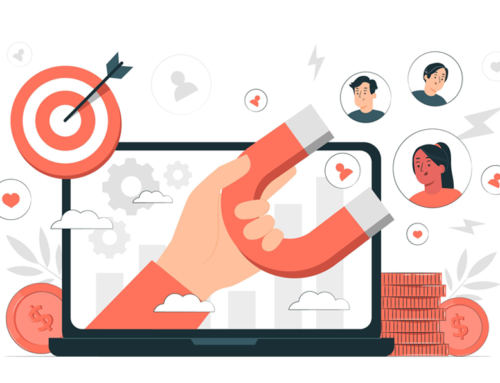Small business owners face a brutal reality: Your logo isn’t just a graphic—it’s the face of your brand. Yet designing one often feels like choosing between two bad options. Hire a designer? That could cost hundreds, even thousands, of dollars.
DIY it with clunky software? You risk ending up with a generic, forgettable mark. Meanwhile, competitors with deeper pockets or design teams outpace you, leaving your brand invisible in a crowded market.
AI-powered design solutions cut through this dilemma. They slash costs, save time, and deliver professional results—without requiring design expertise.
Let’s break down why these tools are reshaping branding for small businesses.
1. Slash Costs Without Sacrificing Quality
Traditional logo design drains budgets. Freelancers charge a lot per project; agencies demand even more. For cash-strapped startups, this isn’t feasible. AI tools disrupt this model. For just a fraction of the cost, you get full ownership of a polished logo, editable files, and brand kits for social media or print materials.
Critics claim cheap tools produce cheap logos, but AI platforms output vector files (SVG) and high-resolution PNGs, ensuring logos look sharp on billboards or business cards. These tools analyze industry trends to avoid outdated aesthetics—think of a fintech startup receiving sleek, minimalist designs automatically aligned with contemporary finance branding.
Quality isn’t compromised; it’s streamlined.
2. Speed Up Branding Timelines From Weeks to Minutes
Time is your scarcest resource. Waiting weeks for a designer’s first draft stalls launches and rebrands. AI generators deliver logos in under 10 minutes. Input your industry and aesthetic preferences—say, “modern” or “playful”—and the tool serves tailored designs.
Some worry that rushed logos lack strategic thinking, but platforms counter this by asking targeted questions about your brand’s values and audience. AI doesn’t replace strategy—it codifies it. For instance, a sustainability-focused skincare brand might prioritise earthy tones and organic shapes, guiding the algorithm to align visuals with a mission.
3. Customise Like a Pro (Even If You’re Not One)
AI platforms prioritise flexibility, countering the myth of cookie-cutter outputs.
Picture a tech startup founder starting with a default blue logo: She swaps the color for her brand’s signature orange, changes the font to sleek minimalism, and adds a circuit-inspired icon. The generic becomes distinct in minutes.
For those lacking design confidence, AI tools simplify decisions with pre-built color palettes and font pairings. Their AI suggests combinations based on your industry—warm tones for cafes, sharp contrasts for fintech. You’re not designing in a vacuum; you’re guided by data-driven insights. A real estate agent unsure about typography might receive bold, serif fonts that convey trust and stability, avoiding trial-and-error guesswork.
4. Future-Proof Your Brand Identity
A logo isn’t a one-and-done project. As your business grows, your branding must adapt. AI tools offer scalable solutions: Vector files (SVG) ensure logos stay crisp at any size, while brand kits bundle social media templates and business cards for consistency across all digital platforms.
Consider a freelance consultant who starts with a basic logo from an AI-powered logo generator. Two years later, she expanded into a full agency. Using the same platform, she evolves her logo into a cleaner, more professional mark without restarting from scratch.
Subscription models let you update designs as trends shift. Critics argue this locks businesses into recurring fees, but the alternative—rebranding from scratch every few years—often costs far more.
5. Tackle the “Originality” Myth Head-On
Early logo generators recycled the same static templates, but modern solutions powered by AI tools now use advanced algorithms to generate fresh, original designs. Your prompts—the specific words and phrases you input—act as the creative engine. This is where your brand’s personality takes center stage.
For example, a pet grooming business owner typing “playful, organic, paws” might get a logo with a hand-drawn bone icon and soft green hues. If a competitor uses a slightly tweaked prompt like “whimsical, eco-friendly, paw prints,” the AI could produce a logo with abstract paw-shaped leaves in earth tones.
While no tool guarantees 100% uniqueness, refining your prompts (e.g., swapping “modern” for “retro” or specifying colors like “muted teal”) minimises overlap. The key? Spend just a bit of the time you save on brainstorming descriptive, tailored prompts—this small effort ensures your logo stands apart.
Still, always run your design through trademark databases. Most AI platforms flag similarities to existing logos during customisation. Pair this with an online legal check, and you effectively mitigate all risks for cheap.
Wrapping Up
AI logo generators solve the trifecta of small business pain points: cost, time, and accessibility. They’re not about replacing human creativity but amplifying it. Use them to save thousands on design costs, launch faster with instant, editable logos, and maintain control over your brand’s visual identity.
In a market where consumers judge credibility based on logo quality, settling for mediocre design isn’t an option. AI tools level the playing field, letting you compete with established brands—without their budget. The question isn’t whether to use AI for your logo. It’s whether you can afford not to.





